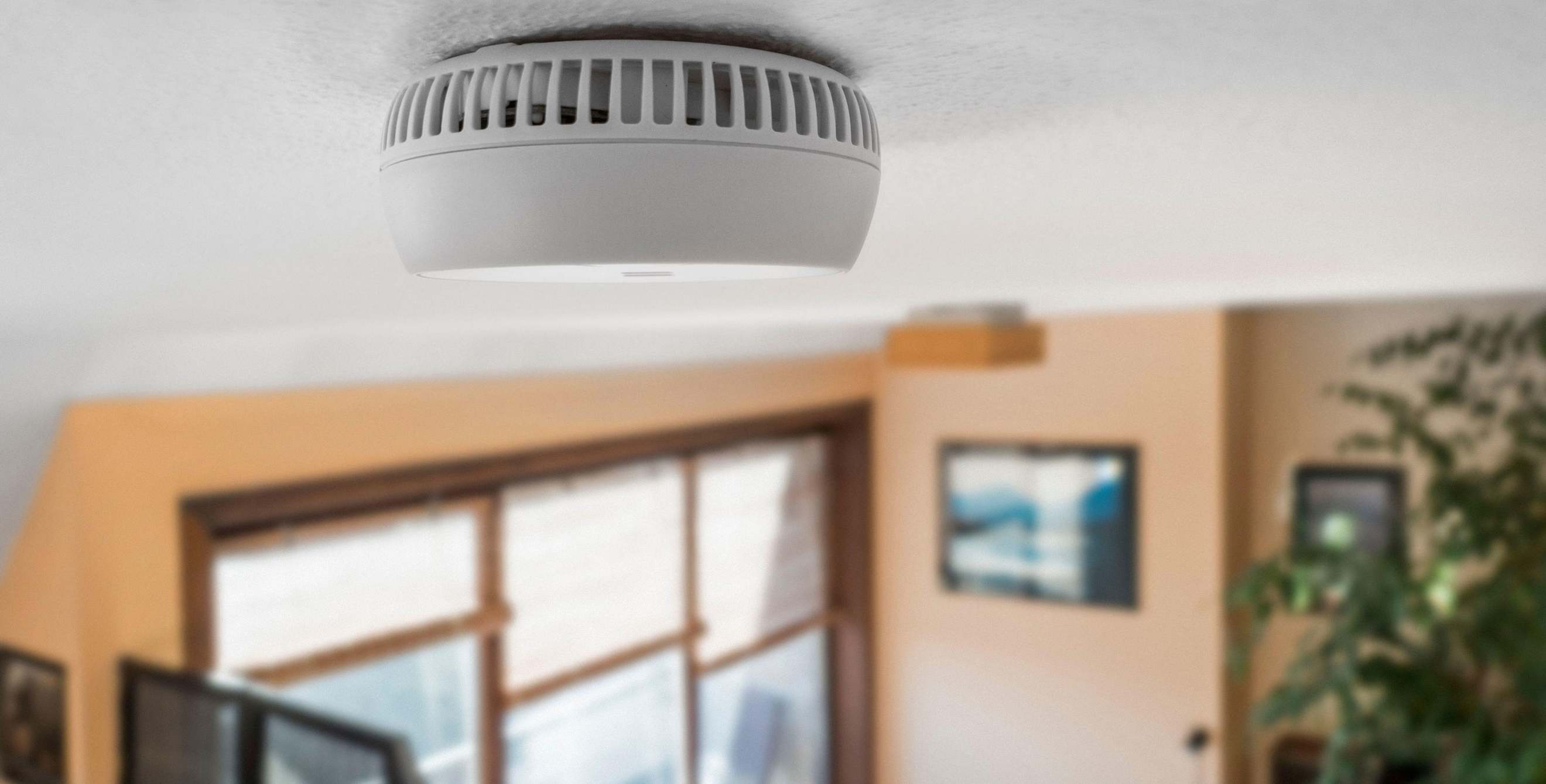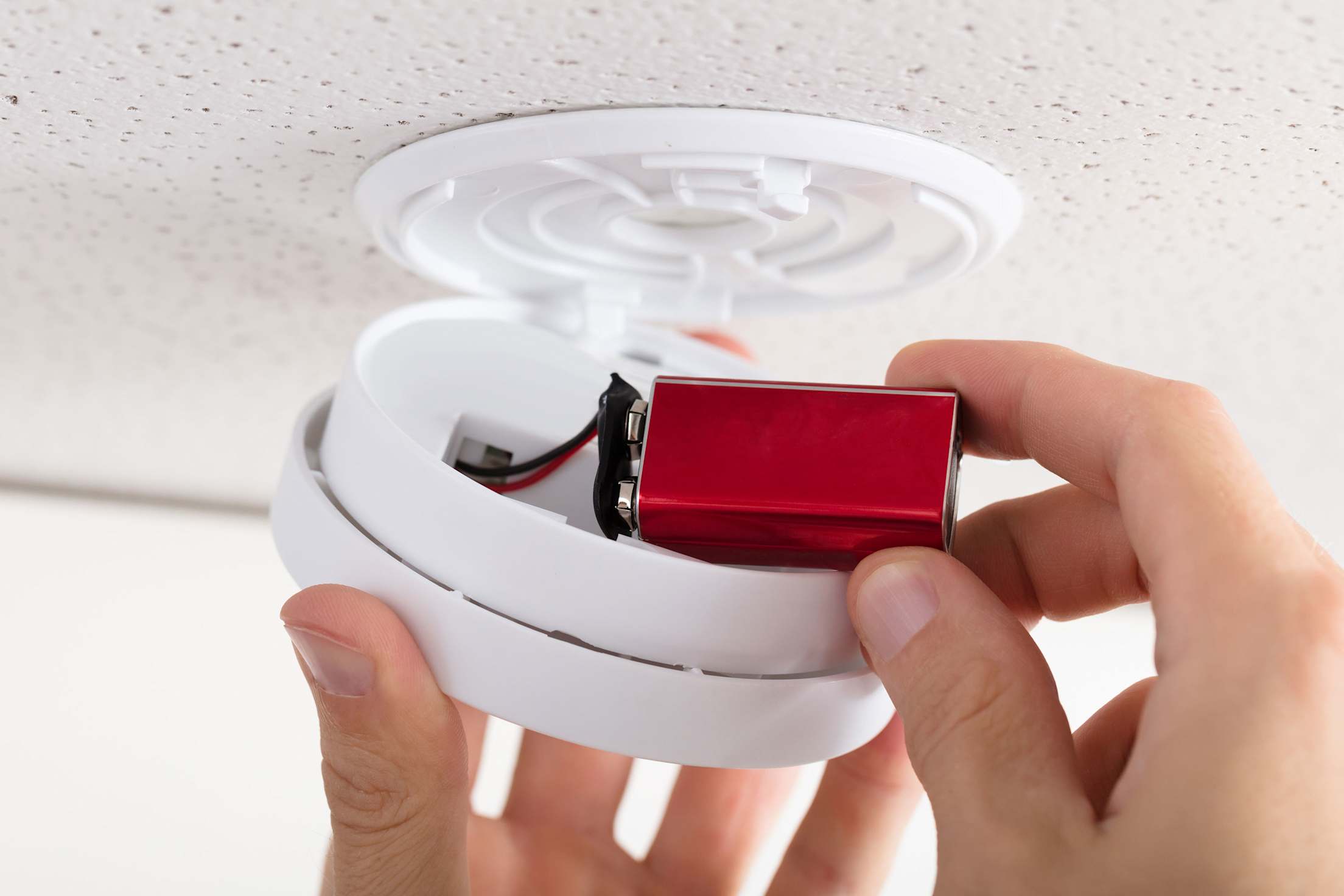
Why You Need a Smart Smoke Alarm
These devices watch over your home when you’re away.

It’s happened to everyone at least once. Whether it’s from failed cooking attempts or a low battery, your smoke detector begins to chirp every 30 to 60 seconds, driving you—and your pets—crazy.
Once you determine there’s no fire danger, likely the first thing you do is search online for information on how to turn the beeping off. You’ll find that one of the main reasons smoke detectors chirp is a low battery. Beyond needing to have the batteries replaced, smoke or carbon monoxide detectors can malfunction for a variety of reasons. There’s no doubt that a chirping smoke detector is annoying, but worse is a nonfunctioning one.
Device age, poor placement, tampering with the devices, and exposure to elements such as dust, steam, paint, or water are reasons for concern. Yet statistics show that missing or dead batteries are the chief reasons smoke detector alarms don’t sound in an emergency.
Here’s the thing: While that beeping may be a nuisance, smoke detectors save lives. The National Fire Protection Association (NFPA) states there are, on average, 358,500 home fires in the United States every year—that’s one every 87 seconds—and those fires cause approximately 3,000 deaths a year.
One of every three home fire deaths is caused by a smoke detector that didn’t work properly or had no batteries installed. On an optimistic note, NFPA reports that the death rate per 1,000 home fires was 55 percent lower in homes with working smoke alarms than in homes with no alarms or nonfunctioning alarms.
Get up to code.
Each state determines its residential building codes, and all but two states (Missouri and Texas have no statewide fire or building codes and codes are adopted at the local level) require smoke detectors in all residential dwellings; many also require carbon monoxide detectors. Most homes have detectors installed, and in newer homes and apartment buildings detectors are hardwired with a battery backup. Smoke detectors should be placed on every level of the home and in or near each sleeping area. Smoke detectors serve as our nose when we’re sleeping, so if one is not working, it’s not going to wake us up.

Replace old devices.
Like washing machines and refrigerators, smoke and carbon monoxide detectors don’t last forever. Experts recommend you replace them every seven to 10 years. Check the manufacture or expiration date on the back of the smoke alarm, and if it’s nearing 10 years, replace it. If you’ve been in your home for a while and are unsure of its manufacture date, it’s most likely time for a new detector.
Get protection while you're away.
Functioning smoke detectors protect us when we’re home, but what happens if a fire occurs when we’re away from home and don’t even know we should call 911?
According to Lindsay Gutierrez, director of product management for AAA Smart Home Security, smart smoke and carbon monoxide detectors help protect us when we’re not home. Smart detectors are connected to your home’s security system and while they don’t replace builders’ smoke detectors, they offer additional assurance.
“Builder smoke detectors are required in all homes, but you have to be home to know if your house is on fire. With a smart system, you don’t have to be home because a smart smoke or carbon monoxide detector is connected to a security and life safety system that sends an alert to a central monitoring station,” says Gutierrez.

Today’s smart home systems connect everyday household devices through wireless technology, a control panel, and apps connected to your phone. AAA Smart Home Security recommends adding protection for your home with smart smoke and carbon monoxide detectors that function beyond the abilities of standard builder models.
Using built-in PowerG technology, smoke and carbon monoxide detectors purchased from AAA Smart Home Services offer multiple benefits. A primary benefit is the encryption and cybersecurity built into the system. Additionally, the system uses two-way communication, an important feature for smoke and carbon monoxide detectors. If a device detects smoke or gas, an alarm sounds, and the detector sends a signal to the control panel, which, in turn, signals all the detectors on the system to sound an alarm—an important safety feature that allows all family members to escape danger. Also—especially important if you’re not home—the central monitoring station alerts the fire department to send assistance.
Don't forget to test.
Gutierrez says that smart smoke and carbon monoxide detectors should be tested once a month, the same standard as builder detectors. You’ll receive an alert that you tested the device and that it’s working. Another benefit for smart smoke detectors is that if the battery dies, you’ll receive notification that the device is no longer communicating—an important reminder to keep you and your family safe.
AAA Members save up to $60 per year on AAA Smart Home Security Monitoring.